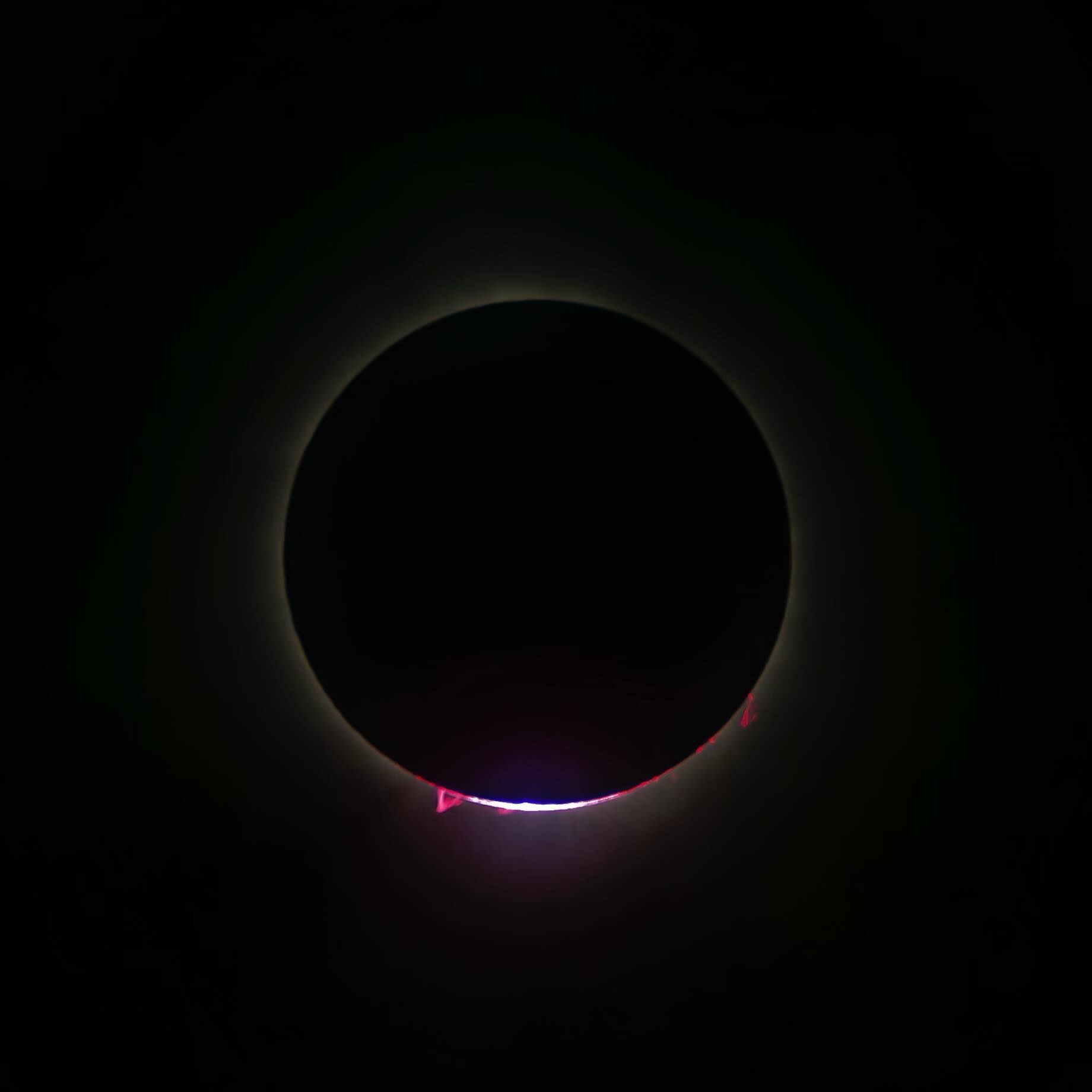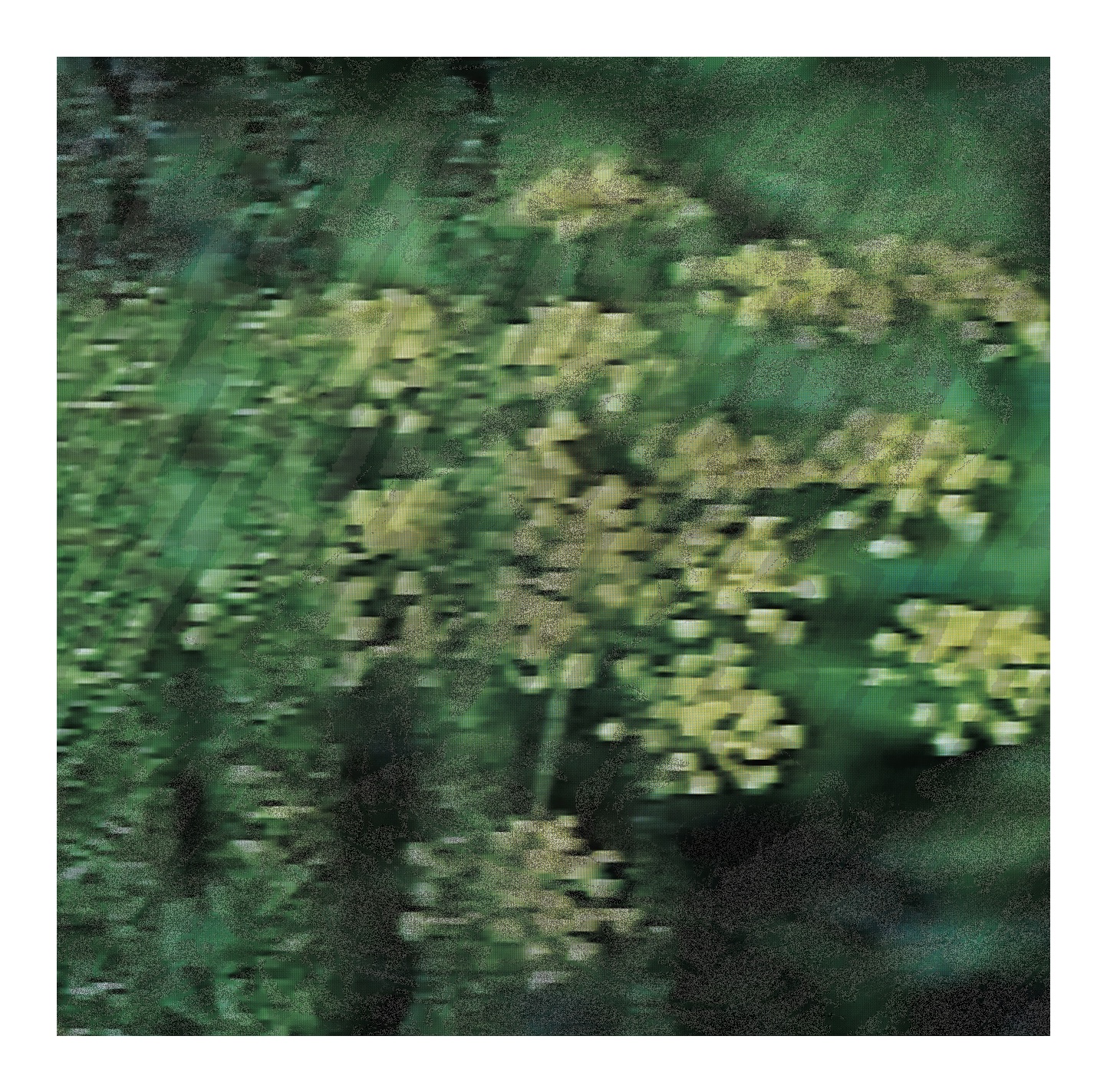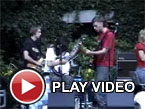 Dorothy Moskovitz was the singer in The United States of America, a short-lived group which made one legendary self-titled album. That was in December 1967 and she later became a member of Country Joe McDonald's band, sang live jazz, composed for children, commercials, theater, and became an elementary school music teacher. Her return on Under an Endless Sky, recorded with Italian electronic composer Francesco Paolo Paladino and writer Luca Ferrari is astonishing, and never more so at the moment around two and a half minutes into the opening title track when we hear Dorothy Moskovitz sing for the first time in a very long time*. If her voice once sounded cooler and more urbane than Catherine Ribeiro's, more innocent and intelligent than Grace Slick's, in 2023 it has a crumbling beauty and defiant timbre usually associated with Robert Wyatt or Nico (who apparently once tried to join TUSoA). Comparisons are entertaining but also odious; Moskovitz is a strange, distinctive treasure, perhaps unique.
Dorothy Moskovitz was the singer in The United States of America, a short-lived group which made one legendary self-titled album. That was in December 1967 and she later became a member of Country Joe McDonald's band, sang live jazz, composed for children, commercials, theater, and became an elementary school music teacher. Her return on Under an Endless Sky, recorded with Italian electronic composer Francesco Paolo Paladino and writer Luca Ferrari is astonishing, and never more so at the moment around two and a half minutes into the opening title track when we hear Dorothy Moskovitz sing for the first time in a very long time*. If her voice once sounded cooler and more urbane than Catherine Ribeiro's, more innocent and intelligent than Grace Slick's, in 2023 it has a crumbling beauty and defiant timbre usually associated with Robert Wyatt or Nico (who apparently once tried to join TUSoA). Comparisons are entertaining but also odious; Moskovitz is a strange, distinctive treasure, perhaps unique.
The United States of America is indeed a legendary recording, and I realize that term is overused nearly to the point of being meaningless, but the record holds up more than fifty years later. The group had some fairly obvious 1960s politics at their core, but also a serious avant garde intent in their sound. They dispensed with electric guitars in favor of strings, keyboards, and primitive improvised electronics. Electrical engineer Tom Oberheim was commissioned to make a ring modulator and aerospace engineer Richard Durrett built electronic oscillators into a monophonic synthesizer. An octave divider was applied to electric violin, drums wired with contact microphones, and slinkies hung from cymbals for a musique concrète effect. Group leader Donald Byrd—previously a member of the Fluxus movement which included John Cage and La Monte Young—also threw in references to older American music such as ragtime, country blues, and—perhaps in a nod to Charles Ives—marching bands.



 Releasing two full length albums mere months from each other, Colin Andrew Sheffield has been especially active in 2023. Considering his previous Repair Me Now dates back to 2018, it is a veritable flurry of activity. However, this is not a case where Don't Ever Let Me Know and Images seem like a double album split into two separate works, but both are thematically and structurally different from one another, even if both clearly showcase his approach of mangling samples and recordings into entirely different creations.
Releasing two full length albums mere months from each other, Colin Andrew Sheffield has been especially active in 2023. Considering his previous Repair Me Now dates back to 2018, it is a veritable flurry of activity. However, this is not a case where Don't Ever Let Me Know and Images seem like a double album split into two separate works, but both are thematically and structurally different from one another, even if both clearly showcase his approach of mangling samples and recordings into entirely different creations. The latest cassette from the enigmatic duo Zizia (astrologer Amber Wolfe and natural scientist Jarrod Fowler) is intentionally ambiguous just from its presentation. No information presented within the tape itself, its neon green case covers a blurry photo of the Zizia flower and an intricately printed abstract image on the cassette shell, without a single bit of text included on either. A quick search online finds a website that offers details, listings of insects, plants, and artists that serve only to confound more than clarify. The self-identified concept of anti-musicology is apparent, however, and results in a complex and diverse suite of two lengthy noise works.
The latest cassette from the enigmatic duo Zizia (astrologer Amber Wolfe and natural scientist Jarrod Fowler) is intentionally ambiguous just from its presentation. No information presented within the tape itself, its neon green case covers a blurry photo of the Zizia flower and an intricately printed abstract image on the cassette shell, without a single bit of text included on either. A quick search online finds a website that offers details, listings of insects, plants, and artists that serve only to confound more than clarify. The self-identified concept of anti-musicology is apparent, however, and results in a complex and diverse suite of two lengthy noise works. These two albums from Seah, also known as multimedia artist and philosopher Chelsea Heikes, seemingly draw from different elemental categories, which ends up setting the foundation for the sounds contained within. The first, Conduits of the Hydrosphere, clearly draws from water while Clouds and Spectres is appropriately expansive, vapor-like, and ghostly at times. Released separately, they feel like complementary works that act as variations on sonic exploration.
These two albums from Seah, also known as multimedia artist and philosopher Chelsea Heikes, seemingly draw from different elemental categories, which ends up setting the foundation for the sounds contained within. The first, Conduits of the Hydrosphere, clearly draws from water while Clouds and Spectres is appropriately expansive, vapor-like, and ghostly at times. Released separately, they feel like complementary works that act as variations on sonic exploration. Back in 2019 Benoit Pioulard (Thomas Meluch) issued Sylva—an album full of abstract hyper-saturated lo-fi drone-pop sonic textures, which came with an 84 page collection of nature photographs in a linen book. Two pieces with vocals stood out: the brilliantly Bibioesque "Keep" and the less jangly but equally catchy "Meristem." These songs could not have been more appealing to me if Meluch had somehow used a machine to extract my personal dream essence as I slept. Naturally, I promptly forgot to write anything about Sylva, but Eidetic is a leap forward, with more vocals, so I'm glad I kept my powder dry.
Back in 2019 Benoit Pioulard (Thomas Meluch) issued Sylva—an album full of abstract hyper-saturated lo-fi drone-pop sonic textures, which came with an 84 page collection of nature photographs in a linen book. Two pieces with vocals stood out: the brilliantly Bibioesque "Keep" and the less jangly but equally catchy "Meristem." These songs could not have been more appealing to me if Meluch had somehow used a machine to extract my personal dream essence as I slept. Naturally, I promptly forgot to write anything about Sylva, but Eidetic is a leap forward, with more vocals, so I'm glad I kept my powder dry. Every so often a beautifully flawed pseudo-concept album gets released which it is almost a sin to try to describe. So it is with this absolutely mesmerizing record, a taste-smashing, fabulously old-fashioned, wobbly blitzkrieg of slippery, retro-futuristic, prog rock precision. As a rule I try to avoid describing music by talking about other music the reader may or may not have heard, but the gloves are coming off for this one. Imagine if modern psych groups weren't so one-paced, if Barclay James Harvest had a wah wah pedal and enjoyed fiddling with tape speeds, if Yes were fronted by Serge Gainsbourg or had a sense of humor, if The Opium Warlords and Bo Hansen joined The Mike Sammes Singers; and it all sounded perfectly natural. Juxtaposition and incongruity are at the heart of The Valley of The Dandies: a wonderfully unpredictable recording which manages to sound deliberately dated, and also touches on mythical themes ("explored" would be an exaggeration) but not in a po-faced or over-referential manner. The music is sometimes grandiose but CV Vision does not portray by resorting to a dull slow burn plodding pace. These tunes are amusing, bright, clever, and dynamic, the lyrics intriguingly clumsy but yet light and unobtrusive. There is an unknowable quality to this album, though; and a certain confidence in its completeness. It can not be reduced to a few neat genres, has a rich complexity but never sounds cluttered or gets bogged down. This is a real gem: clean, clear and valuable. It may become a cult classic or merely prove to be a refreshing oddity. Either way I played this thing through five times without a break!
Every so often a beautifully flawed pseudo-concept album gets released which it is almost a sin to try to describe. So it is with this absolutely mesmerizing record, a taste-smashing, fabulously old-fashioned, wobbly blitzkrieg of slippery, retro-futuristic, prog rock precision. As a rule I try to avoid describing music by talking about other music the reader may or may not have heard, but the gloves are coming off for this one. Imagine if modern psych groups weren't so one-paced, if Barclay James Harvest had a wah wah pedal and enjoyed fiddling with tape speeds, if Yes were fronted by Serge Gainsbourg or had a sense of humor, if The Opium Warlords and Bo Hansen joined The Mike Sammes Singers; and it all sounded perfectly natural. Juxtaposition and incongruity are at the heart of The Valley of The Dandies: a wonderfully unpredictable recording which manages to sound deliberately dated, and also touches on mythical themes ("explored" would be an exaggeration) but not in a po-faced or over-referential manner. The music is sometimes grandiose but CV Vision does not portray by resorting to a dull slow burn plodding pace. These tunes are amusing, bright, clever, and dynamic, the lyrics intriguingly clumsy but yet light and unobtrusive. There is an unknowable quality to this album, though; and a certain confidence in its completeness. It can not be reduced to a few neat genres, has a rich complexity but never sounds cluttered or gets bogged down. This is a real gem: clean, clear and valuable. It may become a cult classic or merely prove to be a refreshing oddity. Either way I played this thing through five times without a break! The latest ambitious durational epic from the Opalio brothers is thankfully not nearly as daunting as its 15-disc physical form suggests, as RINASCIMENTO ("Renaissance") is composed of 15 movements of varying lengths ranging from 5 to 40 minutes. The reasoning behind the unusual format is arguably twofold, as the Opalios' belief that "each sound claims its own space" is extended to dedicate a full disc to each movement and listeners are invited to "subvert the order" to make use of "random/chance operation à la Cage." There is an additional piece to the puzzle as well, however, as the handcrafted box and CD-R format were deliberately chosen as a return to MCIAA's "radical DIY" origins and as a pointed commentary on underground music's current maddening dependence on vinyl pressing plants and predatory corporations. Unsurprisingly, the primary appeal of RINASCIMENTO is the same as that of every other multi-hour MCIAA tour de force: it is a sustained and mind-altering plunge into otherworldly psychedelia that abandons nearly all earthbound notions of harmony, melody, structure, and instrumentation (and that is not an exaggeration). While the brothers' sonic palette will be a familiar one for longtime MCIAA fans (being a two-person real-time "spontaneous composition" project has some limitations), RINASCIMENTO is nevertheless one hell of a statement, as it collects the duo's most revelatory flashes of inspiration from an entire year of recordings (several of which capture the duo in peak longform form).
The latest ambitious durational epic from the Opalio brothers is thankfully not nearly as daunting as its 15-disc physical form suggests, as RINASCIMENTO ("Renaissance") is composed of 15 movements of varying lengths ranging from 5 to 40 minutes. The reasoning behind the unusual format is arguably twofold, as the Opalios' belief that "each sound claims its own space" is extended to dedicate a full disc to each movement and listeners are invited to "subvert the order" to make use of "random/chance operation à la Cage." There is an additional piece to the puzzle as well, however, as the handcrafted box and CD-R format were deliberately chosen as a return to MCIAA's "radical DIY" origins and as a pointed commentary on underground music's current maddening dependence on vinyl pressing plants and predatory corporations. Unsurprisingly, the primary appeal of RINASCIMENTO is the same as that of every other multi-hour MCIAA tour de force: it is a sustained and mind-altering plunge into otherworldly psychedelia that abandons nearly all earthbound notions of harmony, melody, structure, and instrumentation (and that is not an exaggeration). While the brothers' sonic palette will be a familiar one for longtime MCIAA fans (being a two-person real-time "spontaneous composition" project has some limitations), RINASCIMENTO is nevertheless one hell of a statement, as it collects the duo's most revelatory flashes of inspiration from an entire year of recordings (several of which capture the duo in peak longform form). This is the second solo album from NYC-based violist/composer/musicologist Annie Garlid and it borrows its name from the Greek word for "place." Notably, Garlid moved back to the US in 2018 after spending a decade in Europe (playing viola in a German opera orchestra, among other things) and that return to her home country unsurprisingly stirred up some deep and unfamiliar thoughts and feelings. Those ruminations directly inspired Topos conceptually, as the album is a meditation on the "simultaneous familiarity and foreignness" of Garlid's surroundings and her entanglement "with a place that was both in her memory and in front of her eyes." Regardless of its inspirations, Topos is a very different (and stronger) album than its predecessor United, as Garlid's medieval and baroque influences are newly downplayed in favor of a more sensuous, hallucinatory, and vocal-centric vision. While that transformation makes a lot of sense given Garlid's work with artists like Caterina Barbieri, Holly Herndon, Emptyset, and ASMR artist Claire Tolan, her assimilation of those disparate influences is impressively seamless and inventive, as Topos feels like the blossoming of a compelling and distinctive new vision.
This is the second solo album from NYC-based violist/composer/musicologist Annie Garlid and it borrows its name from the Greek word for "place." Notably, Garlid moved back to the US in 2018 after spending a decade in Europe (playing viola in a German opera orchestra, among other things) and that return to her home country unsurprisingly stirred up some deep and unfamiliar thoughts and feelings. Those ruminations directly inspired Topos conceptually, as the album is a meditation on the "simultaneous familiarity and foreignness" of Garlid's surroundings and her entanglement "with a place that was both in her memory and in front of her eyes." Regardless of its inspirations, Topos is a very different (and stronger) album than its predecessor United, as Garlid's medieval and baroque influences are newly downplayed in favor of a more sensuous, hallucinatory, and vocal-centric vision. While that transformation makes a lot of sense given Garlid's work with artists like Caterina Barbieri, Holly Herndon, Emptyset, and ASMR artist Claire Tolan, her assimilation of those disparate influences is impressively seamless and inventive, as Topos feels like the blossoming of a compelling and distinctive new vision. Just about anything which bucks stereotypes, and the more effortlessly the better, is usually fine and dandy with me. The notion of a sustained outbreak of surrealism down in Alabama is therefore beyond delicious. I say this because there's a definite sense in which Turner Williams Jr. is following in the rambling loose limbed footsteps of such musicians as Ron Pate, Fred Lane, LaDonna Smith, and particularly Davey Williams, who studied with Johnny Shines and was part of the whole Raudelunas Pataphysical Revue scene - playing alto and guitar on such pieces as "The Lonely Astronaut" and "Concerto For Active Frogs''. Let me say here that the origin of pataphysics is perhaps best left to another time, since Alfred Jarry's absurdity and all that merde (absinthe-fueled and otherwise) simply cannot be skimmed over.
Just about anything which bucks stereotypes, and the more effortlessly the better, is usually fine and dandy with me. The notion of a sustained outbreak of surrealism down in Alabama is therefore beyond delicious. I say this because there's a definite sense in which Turner Williams Jr. is following in the rambling loose limbed footsteps of such musicians as Ron Pate, Fred Lane, LaDonna Smith, and particularly Davey Williams, who studied with Johnny Shines and was part of the whole Raudelunas Pataphysical Revue scene - playing alto and guitar on such pieces as "The Lonely Astronaut" and "Concerto For Active Frogs''. Let me say here that the origin of pataphysics is perhaps best left to another time, since Alfred Jarry's absurdity and all that merde (absinthe-fueled and otherwise) simply cannot be skimmed over. This is the fifth album of traditional folk tunes which Alasdair Roberts has issued. He has also released several albums of his own compositions and it is a mark of his skill that it is pretty much impossible to tell the difference, and to know whether songs are his own imaginings or not. All share an erudite sensibility, often mixing his plaintive ghostly wailing voice (sometimes mournful, often joyous) with fine, spidery, guitar accompaniment. This new record is a deep collection, full of sweet spots, rich in detail, crystal clear in execution, and teeming with life. As usual, he reveals the multilayered meanings and nuances in even the most apparently straightforward songs, as with "The Bonny Moorhen" of Celtic folklore, and "Drimindown," a simple tale of a lost cow but also a devastating loss of a family's livelihood.
This is the fifth album of traditional folk tunes which Alasdair Roberts has issued. He has also released several albums of his own compositions and it is a mark of his skill that it is pretty much impossible to tell the difference, and to know whether songs are his own imaginings or not. All share an erudite sensibility, often mixing his plaintive ghostly wailing voice (sometimes mournful, often joyous) with fine, spidery, guitar accompaniment. This new record is a deep collection, full of sweet spots, rich in detail, crystal clear in execution, and teeming with life. As usual, he reveals the multilayered meanings and nuances in even the most apparently straightforward songs, as with "The Bonny Moorhen" of Celtic folklore, and "Drimindown," a simple tale of a lost cow but also a devastating loss of a family's livelihood.
